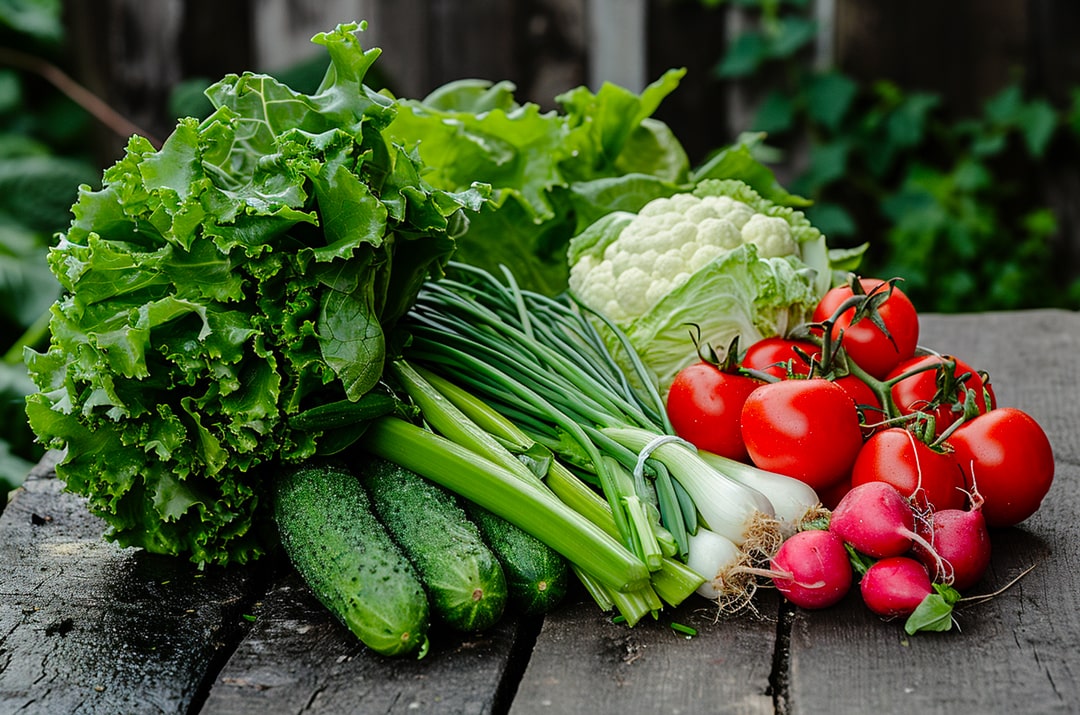Best Vegetables for Weight Loss: Our Top-10 Veggies for HLS and Weight Control

It is not a surprise that most nutritionists advise consuming more vegetables to maintain healthy weight or lose extra weight. Yet, there are so many vegetables in the market and on the mall’s shelves! Are all of them good for weight loss? Definitely, not all! Let’s consider which veggies are the best for weight loss goals, and which are not so good.
The Main Role Vegetables Play in Weight Loss
When do we gain extra weight? It is proven that weight increases when we consume more calories than we can burn. The main source of calories which our body gladly transforms into fat deposits are carbs, fats, and cholesterol. Vegetables, in general, have low levels of fats and cholesterol while they have enough fiber to train our stomach, tame the feeling of hunger, and improve digestion. That makes them a good choice for various diets. But not all of them are similarly useful. Let’s first consider your “veggie ban list” and then define the best ones to lose weight.
Veggies that Are Weight Loss Enemies
In your weight normalization and slimming goals, you should avoid vegetables which contain too much starch and sugar as these ingredients are sources of carbs which easily can deposit in fat on your belly. These are as follows:
- Potatoes;
- Yam;
- Squash and butternut;
- Carrots.
You shouldn’t refuse to eat them 100%, but it is better to consume them moderately.
The Best 10 Vegetables Which Are Weight Loss-Friendly
Now let’s consider the best vegetables for slimming goals. We picked the best ones for you according to their energy levels, carbs and sugars amounts, and additional nutrients they contain.

- Lettuce. This green vegetable consists only of 12 calories per 100 grams. Besides, it mostly consists of water and fibers, which makes it one of the negative-calorie foods. This means that you spend more energy while digesting lettuce than you get from it.
- Cucumbers are also one of the best dietary products. They also consist mostly of water, and their calorie levels are only 15 calories per 100 g. Cucumbers hydrate you, and you do not feel thirsty when eating them, they reduce appetite and provide you with a good amount of soluble fiber. Yet, it refers only to fresh cucumbers, not pickled ones which have more calories and too much salt and sugar in them.
- Celery is a great option for diet. You can eat its roots and sprouts, leaves and stems as well. You can eat them fresh, boil them and mash them, roast them or add to salads of fresh juices. Celery has only 16 calories when raw, and it also is a good source of vitamin K, vitamin A, folate, calcium, and useful flavonoids and antioxidants. Thus, it is a great HLS choice.
- Tomatoes contain only 18 calories. This is true for raw tomatoes, not for your favorite barbecue sauce or Pilate. Besides, tomatoes contain enough water to hydrate you and useful antioxidants. They promote satiety and help to eat moderately.
- Radish is also high in water, fiber, it contains fat-burning components and antioxidants. It prevents cancer and improves skin, and it is only 19 calories per 100 grams.
- Chives are one of our favorite greenery. It has 21 calories per 100 grams and it is sweeter than casual onions. Chives are rich in nutrients and fiber, and it has lots of flavonoids which reduce appetite and help strengthen immunity.
- Spinach is not only Popeye the Sailor’s source of energy. It can be yours as well. Spinach is also a low-calorie vegetable, and its energy levels are only 23 calories per 100 g. Besides, spinach is an indispensable source of potassium, iron, calcium, magnesium, and manganese. It normalizes digestion and helps boost metabolism.
- Asparagus has even fewer calories than spinach, so we cannot pass by that delicacy vegetable. Asparagus is a total fiber and vitamin, it contains lots of folates, and it is truly yummy even when you eat it fresh. Its energy levels are only 20 calories per 100 grams.
- White cabbage is our next choice. This vegetable is rich in fiber, and it makes your guts work intensively and burn calories effectively. It provides you with 27 calories per 100 grams, and you can eat it in various meals including top-rated coleslaw salad, dolma, or borscht.
- Smaller relative to cabbage, white sprouts are also a great option for diet meals. It is a great antioxidant, it provides you with over 48 mg of vitamin C in every ½ cup. And its calorie level is 43 calories. That’s bingo!
These 10 vegetables can be added to your menu in almost limitless amounts, as they provide you with satiety, and it is hard to overeat them. Even if you manage so, it’s OK, as most of these vegetables are water and useful nutrients. Yet, there are also some tips on how to incorporate them into your menu with maximum efficiency.
- Eat them fresh or in salads with low-fat dressings. That is, mayonnaise or Thousand Islands sauce is not a good idea to match with them.
- If you decide to cook them, better use boiling, steaming, grilling, or sautéing techniques.
- Combine vegetables with a good portion of protein to maintain balance.
- Do not eat too many vegetables that are mostly water in the evening if you tend to swell.
Color your menu with these great weight loss helpers, and you can see the results recently. Eating enough vegetables is a path to health, so take it and follow it to get your body slimmed, and your well-being increased.